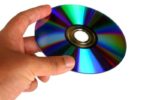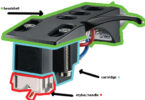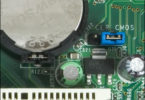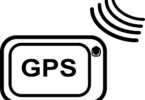Storage Devices vs Media
Summary: Difference Between Storage Devices and Media is that Storage holds data, instructions, and information for future use. For example, computers can store hundreds or millions of customer names and addresses. While Storage holds these items permanently. A computer keeps data, instructions, and information on storage media. In other words, A storage device records (reads) and/or retrieves (writes) items to and from storage media.

Storage Devices
Storage holds data, instructions, and information for future use. For example, computers can store hundreds or millions of customer names and addresses. Storage holds these items permanently. A computer keeps data, instructions, and information on storage media. Examples of storage media are USB flash drives, hard disks, optical discs, and memory cards. A storage device records (writes) and/or retrieves (reads) items to and from storage media. Storage devices often function as a source of input because they transfer items from storage to memory.
USB Flash Drive
A USB flash drive is a portable storage device that is small and lightweight enough to be transported on a key-chain or in a pocket. The average USB flash drive can hold about 4 billion characters. A hard disk provides much greater storage capacity than a USB flash drive. The average hard disk can hold more than 320 billion characters. Hard disks are enclosed in an airtight, sealed case. Although some are portable, most are housed inside the system unit. Portable hard disks are either external or removable. An external hard disk is a separate, freestanding unit, whereas you insert and remove a removable hard disk from the computer or a device connected to the computer.
Optical Disc
An optical disc is a flat, round, portable metal disc with a plastic coating. CDs, DVDs, and Blu-ray Discs are three types of optical discs. A CD can hold from 650 million to 1 billion characters. Some DVDs can store two full-length movies or 17 billion characters. Blu-ray Discs can store about 46 hours of standard video, or 100 billion characters. Some mobile devices, such as digital cameras, use memory cards as the storage media. You can use a card reader/writer to transfer stored items, such as digital photos, from the memory card to a computer or printer.
Media
Storage holds data, instructions, and information for future use. For example, computers can store hundreds or millions of customer names and addresses. Storage holds these items permanently. A computer keeps data, instructions, and information on storage media. In other words, A storage device records (reads) and/or retrieves (writes) items to and from storage media. Examples of storage media are USB flash drives, hard disks, optical discs, and memory cards. A storage device records (writes) and/or retrieves (reads) items to and from storage media. Storage devices often function as a source of input because they transfer items from storage to memory. A USB flash drive is a portable storage device that is small and lightweight enough to be transported on a keychain or in a pocket. The average USB flash drive can hold about 4 billion characters.
Some mobile devices, such as digital cameras, use memory cards as the storage media. You can use a card reader/writer to transfer stored items, such as digital photos, from the memory card to a computer or printer. An optical disc is a type of storage media that consists of a flat, round, portable disc made of metal, plastic, and lacquer. These discs usually are 4.75 inches in diameter and less than one-twentieth of an inch thick.
Also Read:
Difference Between Notebook and Tablet
Difference Between Computer and Laptop
Difference Between USB Flash Drives and Memory Cards
Difference Between Information Processing Cycle and Machine Cycle







Leave a Comment
You must be logged in to post a comment.